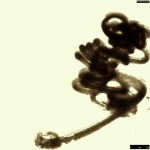Understanding how our immune system responds to multiple infections may lead to more effective, coordinated immunotherapy
It’s often described as an arms race: the ongoing battle between our immune system and the viruses, bacteria and parasites that try to defeat it. For the past seven decades, we’ve dealt with these infections with antibiotics, antivirals and anti-parasite drugs designed to damage and destroy the pathogen.
These drugs have been wildly successful – people now live longer than ever before. But the incidence of antibiotic resistant bacteria is increasing and our defensive toolkit is getting empty. While some researchers are trying to find or design new antibiotic drugs, others are taking a different approach.
A new focus of research is finding ways to manipulate the body’s own immune system and boost our natural defences.
“Immunotherapies are revolutionizing whole areas of medicine at the moment,” says Georgia Perona-Wright, a professor in the Department of Microbiology & Immunology. “It’s an exciting time to be an immunologist.”
The carrier pigeon
Getting a grip on the immune system means taking charge of a vast and diverse army of cells and weaponry. If you liken the body’s immune response to a military operation of yesteryear, Perona-Wright is studying the carrier pigeon, the way that instructions are sent between different operational parts. In this case, the carrier pigeons are cytokines, proteins released by immune cells that tell other cells how to respond to an infection. Different infections cause cells to release different types of cytokines.
Up until recently, we believed that cytokines released by one cell would only activate the cells next to it. As part of her postdoctoral work, Perona-Wright discovered that cytokines leak out beyond their local environment, influencing cells much further afield.
We now know that some cytokines are sticky and don’t travel far while others are slippery, reaching many cells. Perona-Wright’s now studying exactly how far and how fast cytokines spread. She hopes by unlocking these secrets, we will have a better understanding of how to control our bodies’ response to infection and even to multiple infections at once.

Perona-Wright studies a parasitic roundworm called Heligmosomoides polygyrus that lives in the small intestine. Photo: Stephen A. Redpath
Synchronized medicine
Pathogens rarely work alone. For example, the influenza virus often kills through bacterial pneumonia while tuberculosis is exaggerated in people with HIV/AIDS.
One of the pathogens Perona-Wright works with is a parasitic roundworm that lives in the gut. Roundworms affect more than two billion people, a third of the world’s population. Children are often infected at a young age and live with it for years and sometimes decades. During this time, they may also have to fight off a number of other infections like measles, malaria, or bacteria that cause childhood diarrhea like salmonella.
When a person becomes infected with the roundworm, specific cytokines are released. These cytokines send instructions to activate an immune response against the worm, but they also affect nearby cells. The bystanders receive the cytokine instructions even though they have nothing to do with the roundworm infection. They will however play a role in other, unrelated immune responses.
“Our goal is to understand what sort of changes happen to these bystander cells and how this might affect how these cells respond to other infections.”
Perona-Wright points out that most research on infectious diseases involves studying individual pathogens in isolation.
“If you imagine the immune system as a fishing net, when you pull up in one area, you change the tension and shape of the net. We need to consider what is happening when you pull up in two or three or even more areas at once,” she says. “Understanding this cross-talk promises to open a new era of synchronized medicine.”
Perona-Wright believes that immunotherapy will offer us new weaponry that could be used in combination with some of the drugs that we have now.
“Antibiotics have covered us for the last 70 years, but perhaps no more. Immunotherapies could be the trick that gets us through the next 70.”

